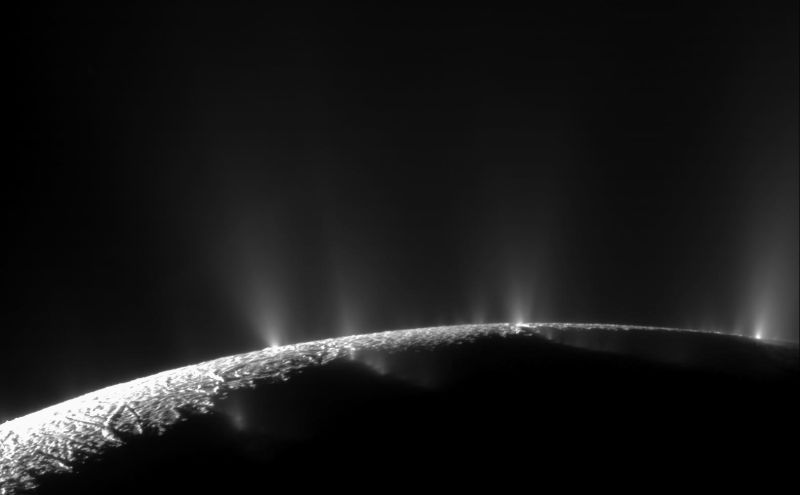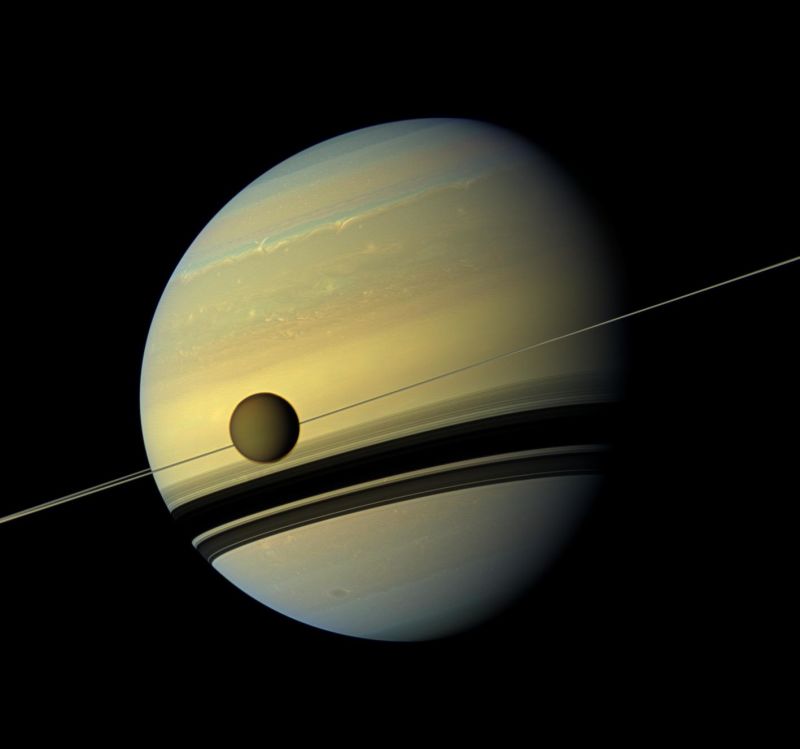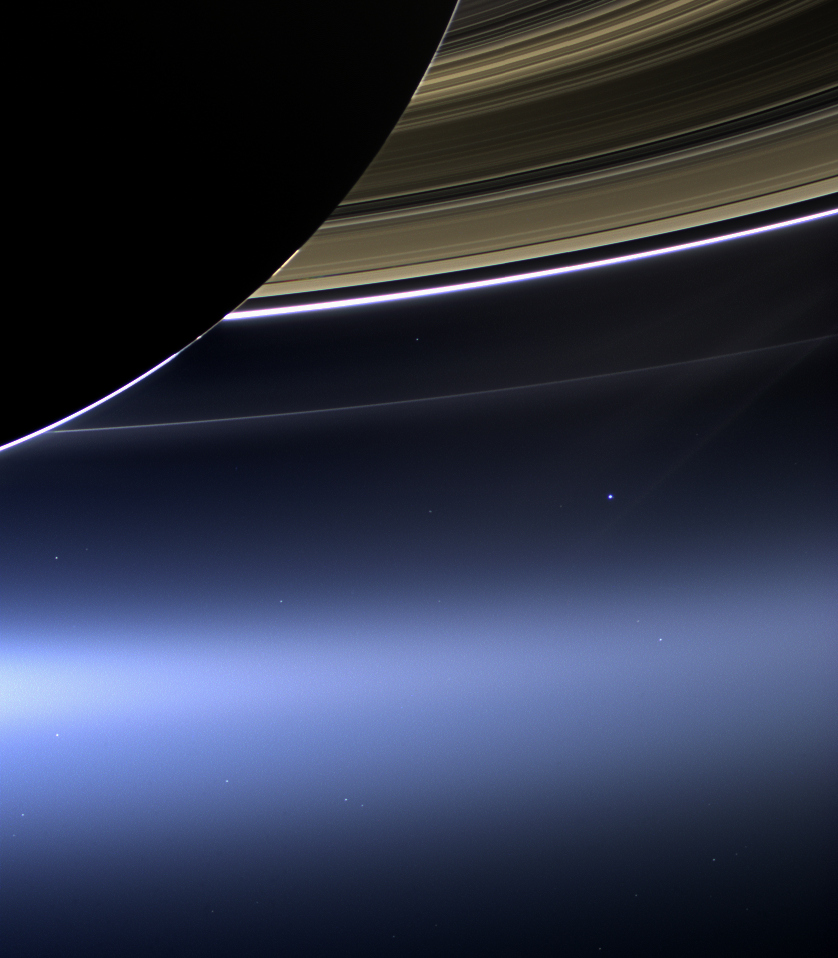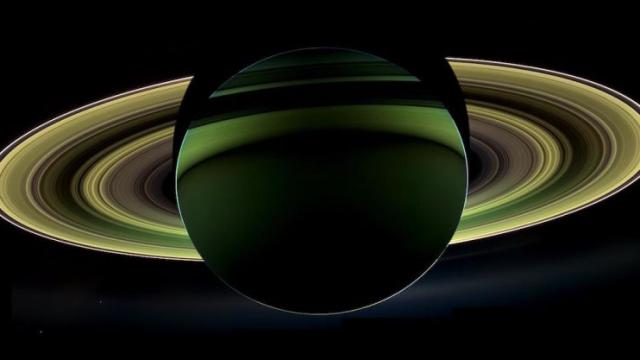Space has a funny way of making us feel both incredibly small yet infinitely lucky for being part of such a vast cosmic sorority. Of course, humans have barely scratched the surface of the final frontier — we’ve never even sent people beyond the Moon. While many uncrewed spacecraft have done an incredible job of revealing our solar neighbourhood to us, honestly, none did it better than NASA’s Cassini probe. After exploring Saturn for 13 years, on September 15 at 9:55PM AEST, the probe will plunge itself into the planet’s atmosphere, becoming one with the very object of its fascination.
Saturn, by Cassini in 2012. (Image: NASA)
The Cassini orbiter, and its attached Huygens probe, left Earth on 15 October 1997, riding on board a Titan IVB/Centaur. The spacecraft journeyed 3.5 billion km to reach Saturn, finally entering the gas giant’s domain on 30 July 2004. Once there, Cassini wasted no time — it performed its first flyby of Saturn’s moons Titan and Dione in December of the same year. The next year, the Huygens parachuted to the surface of Titan, beaming back images from humanity’s first and only landing on an outer solar system moon. During its time in the Saturn system, Cassini has taken over 453,000 images, collected 635 GB of scientific data, and named six Saturnian moons. It hasn’t slacked a day in its cold, metal, anthropomorphic life.

Image: NASA
Before Cassini, the last human-made visitors to the Saturn system were Voyagers 1 and 2 in 1980 and 1981, respectively. While the Voyager probes offered a taste Saturn’s mysteries, Cassini scoured the depths of the planet’s hazy heart. According to NASA, almost 4000 scientific papers have been written using data collected by Cassini.
Over the last 13 years, the spacecraft has made a planet 1.2 billion km away feel close. It has gazed into Saturn’s swirling polar abyss — and it may (or may not) have gazed back. It discovered seas of methane on Titan, and an atmosphere thick with organic molecules that might form the basis of some seriously weird biology. It’s spent the last leg of its life performing 22 dives between Saturn and its rings, taking up-close images that capture unprecedented detail. Perhaps most importantly, Cassini found that Saturn’s icy moon, Enceladus, has some of the right ingredients for life brewing in a liquid water ocean beneath its surface, and spewing out of its south polar geysers — which Cassini has also tasted. Thanks to Cassini, our next trip to Saturn will very likely be a dedicated search for alien life.

Enceladus’ geysers. (Image: NASA)
For those who have written about Cassini, saying goodbye feels both profoundly sad and a little strange — it’s like parting with a longtime friend that you’ve never actually met. In this scenario, that friend is a hunk of metal hurtling through the void, but it feels human nonetheless.
“I ache for the scientists who may not live to see another mission to Saturn, who might not get to see whether life exists under Enceladus’s sheath of ice, or watch a submarine land in Titan’s murky seas,” JoAnna Wendel, a science journalist at Eos, told Gizmodo. “I ache for the scientists who never got to know that ocean worlds could be a target for life. And I ache with existential dread about all the things I won’t get to see when I’m gone.”
Shannon Stirone, a science journalist who’s covered Cassini for years, echoed Wendel’s sadness, but says she’s proud of what the spacecraft has left behind for future generations.
“Cassini gave us the biggest and most profound gift it could,” Stirone said, “a vision of an iconic world that had for human history been off limits to us. With its death we mourn the ending a monumental human endeavour and celebrate its untouchable legacy.”
The scientists who’ve dedicated their lives to the Cassini mission will undoubtedly feel its loss the most. Linda Spilker, Cassini’s project scientist, has previously said that the team involved with the mission “became like a Cassini family”. The spacecraft’s demise means that this tight knit community will start to part ways — but the contributions it brought to the world live on in Cassini’s legacy forever.
“We left the world informed but still wondering,” Cassini program manager Earl Maize said today in a press conference. “Thank you Cassini and farewell.”
From all of us here at Gizmodo, we thank Cassini and the scientists who worked tirelessly on this once-in-a-lifetime mission. Thank you for reminding us what makes this Pale Blue Dot — and the people on it — so unreasonably and spectacularly special.
Ad astra, Cassini.

Image: NASA
